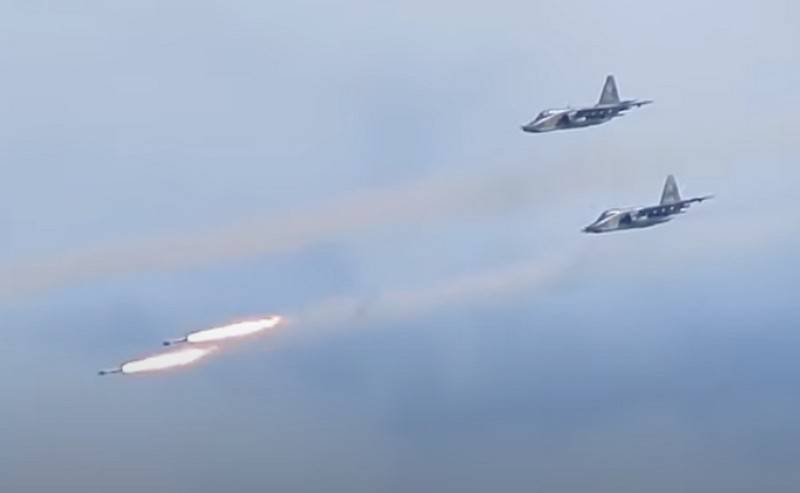Air Launch: How Invented a New Way to Launch Missiles from AircraftThe mortar launch into space is not a forgotten, but also an unrealized idea. Perhaps everything will change.
An event has happened that is rare enough for our country. A patent was issued for launching missiles from aircraft using vertical launchers. It was received by developers from the Engineering Fakel Design Bureau named after Academician Grushin and NPP Radar Mms. A message about this is contained on the website of the Federal Institute of Industrial Property (FIPS). Our engineers have many breakthrough inventions. But they are very rarely patented.
The description of the invention says that the method of vertical air launch of missiles includes a vertical launch from a launch container placed on an air carrier. In this way, it will be possible to launch guided missiles, anti-missiles and ballistic missiles.
Such a launch is sometimes called a "mortar." The peculiarity is that the rocket propulsion engine does not turn on in the launcher, but later, when the rocket moves to a safe distance from the aircraft. The initial launch of the rocket and its ejection from the launcher is carried out, for example, using a pneumatic balloon or a powder pressure accumulator.
Everything is fine, but there is nothing special to enjoy. A paper patent was received for what the domestic "Ilona Masks" tried to practically implement at the beginning of this century, that is, almost twenty years ago. It was an Air Launch project. And it is worth remembering.
In a long-standing project, by the way, actively supported by the then existing Russian Aerospace Agency, it was envisaged to launch a launch vehicle with satellites on board from a height of 10-11 km from an air launch platform. As a carrier aircraft, it was proposed to use a modification of the heaviest serial transport aircraft An-124-100 Ruslan.
To implement the project, the An-124-100, which was in a dead state, was purchased from the Air Force. Only to clean the fuselage from bird droppings required several heavy trucks. The private company that took the plane pledged at its own expense to restore the huge airliner to working condition, and then on its basis to carry out the whole complex of experimental and test work for the implementation of an air launch. This required money. They began to earn on the transportation of bulky goods. At the same time, detailed calculations were carried out on a promising rocket and work to attract investors.
In the interim, the Polet launch vehicle was created, in which it was supposed to use environmentally friendly components of rocket fuel “liquid oxygen + kerosene”.
This missile was just supposed to be dropped from Ruslan in a container from which it would launch "in a mortar". One of the most difficult tasks is to simultaneously land a cargo with a mass comparable to an airplane. They decided it. It was proved that it is quite possible and safe, under a certain flight mode, to drop in the launch zone a launch vehicle weighing 100 tons or more within the carrying capacity of the An-124-100 carrier aircraft.
It was proved that the Launch vehicle, launched in an air launch mode, is capable of launching satellites weighing up to 3.5 tons into low polar orbits, up to 4.5 tons into low equatorial orbits, and up to 0.85 tons into orbits of navigation systems GLONASS and Galileo, up to 0.8 tons per geostationary orbit.
When equipping geostationary satellites with an apogee propulsion system, which ensures the satellite’s transition from a geo-transitional orbit to a geostationary one, the “Launch” launch vehicle made it possible to launch satellites weighing up to 1 ton into geostationary orbit. To the Moon and on the flight paths, the Air Start system was supposed to launch spacecraft weighing 1 ... 1.2 tons.
It is worth repeating that all this was calculated in detail and partially tested almost twenty years ago. Even Elon Musk himself does not dream about this today.
Naturally, the Russian project aroused interest abroad. Since it was most advantageous to launch missiles using the technology of air launch from the equator, Indonesia even proposed using one of its equatorial islands for these purposes. Provided that she will enter the project.
A real spaceport was supposed to be built at the Frans Kaisiepo airdrome (Biak Island). Work was supposed to go with joint Russian-Indonesian funding. An interstate agreement was even signed.
But then the then leadership of the Air Force recalled that the An-124-100, which was completely restored at the expense of a private investor, formally remained in their ownership. How so? The plane flies, brings profit to someone, and the Air Force commander aside. That commander in chief did not even remember about the project "Air Launch", which in its implementation went to the finish line. But he made every effort to pick up Ruslan and actually destroy one of the most promising space projects in Russia. It was funded, it is worth repeating, by an individual. The Russian Ilon Mask did not take place - the Air Force was not allowed, or rather, their commander in chief, whose last name does not make sense.
I would like to believe that the Fakel Machine-Building Design Bureau and the Radar Mms patented their invention will be able to bring the paper document to iron. On the other hand, there is a question.
For a number of technical and technological solutions for the Air Launch project, developed in a preliminary design and confirmed by modeling, 24 patents were received in six countries of the world that possess rocket technologies (USA, Ukraine, France, Germany, Great Britain, Russia). Surely the authors of that project did not begin to patent one of their main achievements - the mortar launch technology?
https://rg.ru/2020/06/06/vozdushnyj-start-kak-izobretali-novyj-sposob-zapuska-raket-s-samoletov.html









 Isos
Isos